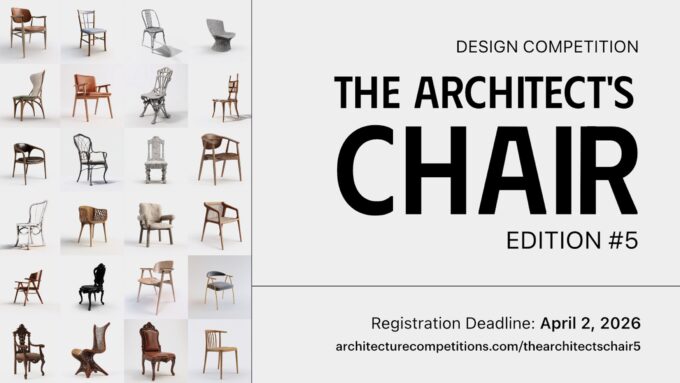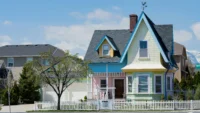- Home
- Articles
- Architectural Portfolio
- Architectral Presentation
- Inspirational Stories
- Architecture News
- Visualization
- BIM Industry
- Facade Design
- Parametric Design
- Career
- Landscape Architecture
- Construction
- Artificial Intelligence
- Sketching
- Design Softwares
- Diagrams
- Writing
- Architectural Tips
- Sustainability
- Courses
- Concept
- Technology
- History & Heritage
- Future of Architecture
- Guides & How-To
- Art & Culture
- Projects
- Interior Design
- Competitions
- Jobs
- Store
- Tools
- More
- Home
- Articles
- Architectural Portfolio
- Architectral Presentation
- Inspirational Stories
- Architecture News
- Visualization
- BIM Industry
- Facade Design
- Parametric Design
- Career
- Landscape Architecture
- Construction
- Artificial Intelligence
- Sketching
- Design Softwares
- Diagrams
- Writing
- Architectural Tips
- Sustainability
- Courses
- Concept
- Technology
- History & Heritage
- Future of Architecture
- Guides & How-To
- Art & Culture
- Projects
- Interior Design
- Competitions
- Jobs
- Store
- Tools
- More

Definitions of crime are formulated according to the interests of those who have the power to translate their interests into public policy. In addition, definitions of crime in a society change as the interests of the ruling class change. The 1975 Lebanese War ravaged a large part of the village Saoufar and left it pierced by a big void. This physical void created is complemented by a void in the memory of people that are currently experiencing an identity crisis. Saoufar suffered a form of geographical, cultural crime and became passive, powerless and emotionless. It’s a village between a preserved past and a future in transformation. Saoufar did not exist as a village that evolved into a city, but rather as a place of water source that gave life to its surrounding monuments.
The goal is to fill the void by gathering new spirits and reactivating the sense of living together with a new coexisting experience. So how can architecture reactivate the ghost beings in the village?
Saoufar has three main traffic lanes. The boulevard, the old railway and the road motorized mainly by the souk and the source of water.
In addition, there are three important historical monuments, the Castle Sursouk, the Grand Hotel Saoufar which housed the first casino in Lebanon and the old Train Station.

The main aim of the strategy is to strengthen the link between these 3 buildings, on one hand, by existing souks acting as initiating elements and, on the other hand, through the weaving of existing and reproduced stairs.
- The villa will be converted into a socio-sports center that targets the needs of young people in Saoufar and connects them to their village through various activities. An extension of a golf course on the west side of the villa is proposed, with some chalets enjoying the scenery in Saoufar and the beautiful view.
- The hotel will be a tourist destination that remains as war memory, encompasses functions of the bourgeoisie and hosts a hotel, restaurants and festivities. The addition to this historical monument is tricky taking into account two main elements, the landscape and the grand hotel. Thus, the idea was to create a form of cave structure working with the natural environment with a play of shadow and light half buried in the hill that encompasses a spa.
- The pedestrian crossing will be animated by the old train station which will remain as memory of the place.

The second goal is to design a place of emotional rehabilitation to open the possibility to intercultural exchanges and offer an indoor / indoor and outdoor / indoor communications space.
The integration of existing stairways and urban corridors was the basis of the concept, which take the flow and inject it into my project.
Out of respect for the existing Souk, a continuation to this linear rural area took place by adding a workshop area in the basement so as not to compete with the hotel. On its 5th facade, seasonal temporary exhibitions will be held, animated by walls and voids that ensures a vertical connection; motorized once more by cafes where you will enjoy a mix of nostalgic emotions of the past.
To the east the direction that connects the water source to the train station, takes the flow and injects it by a decrescendo step.
With the combination of design elements such as the ramp, staircase and sloped roof, a diverse space is formed to present the interactions between nature and architecture. The main facade of this versatile space is oriented towards the place dedicated to the festivities and the themed markets. Covering the second entrance a triangular window gives visitors a sensational view of the vast sky.

The pillar of the project takes us on a journey on the path of the past, where white and black; the full and the empty mixes.
The emptiness is undeniable hence the design of a memorial signaling the reality of the ghost that accentuates this social-cultural crisis in Saoufar.
Spread over two levels, the route begins with the train station passing through the space cluttered with rusty columns. The rust of steel symbolizes time spent, while the size of the structure reflects the fact that the past cannot be neglected. We then descend on white gravel, linking it to the feeling of migration animated by the rhythm of the rail of the train. This space leads us to ‘the void’. A suspended platform allows us to touch the instability of the void, where a representation of the ghost being, unable to communicate, illuminated by a slit of light, arises. We then walk in ‘The fear’ of the dark return where perforated walls tell a story, a testimony of those who have lived the dichotomy between the past and the present.
This uncertain return is represented by the uneven and difficult passage that widens more and more to arrive to ‘Hope’ which lets us escape the reality. We discover a scene that reveals the basic elements of the village, water and nature, attached to Saoufar. To finally climb by a ramp that brings us back to the train station illuminate by a virtual projection.

illustrarch is your daily dose of architecture. Leading community designed for all lovers of illustration and #drawing.
Submit your architectural projects
Follow these steps for submission your project. Submission FormLatest Posts
Renaatus Irumathi
Nestled on the eastern shores of Hulhumale’, Renaatus Irumathi Residence greets each...
White Khamovniki
The project is based on the idea of a building as a...
Millennium Horizon
The future cityscape Millennium Horizon is a groundbreaking architectural project envisioned for...
Wuto Space
A two-bedroom, one-living room apartment in the bustling heart of “Magic City”...


























Leave a comment